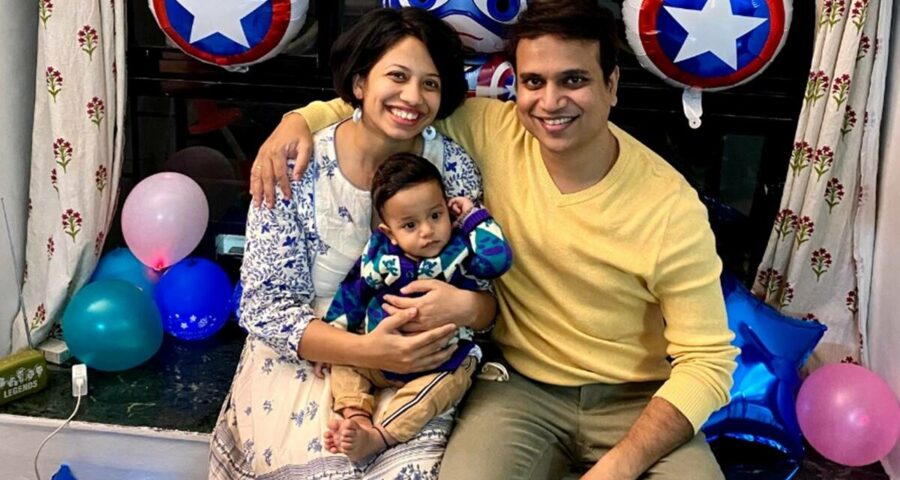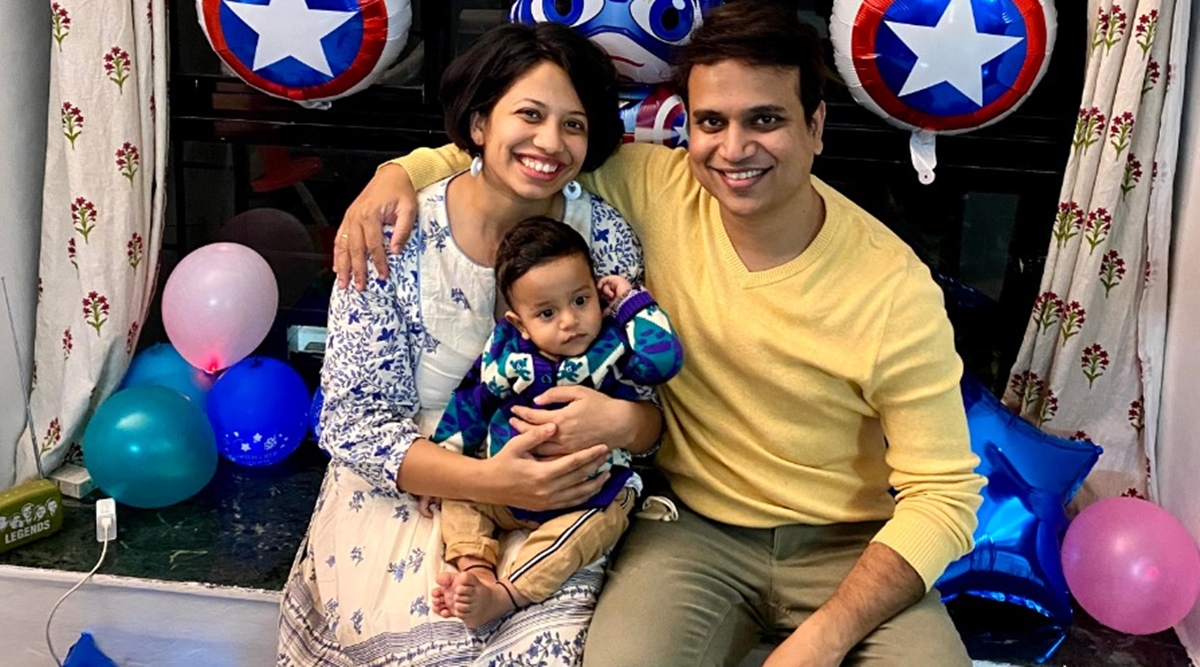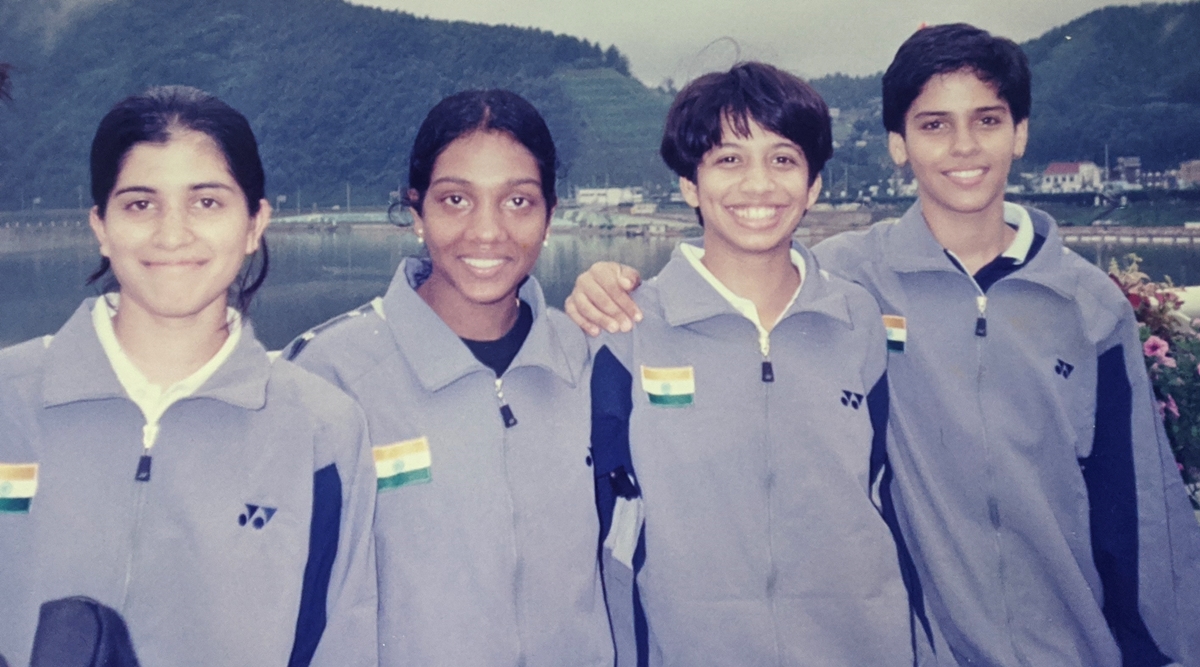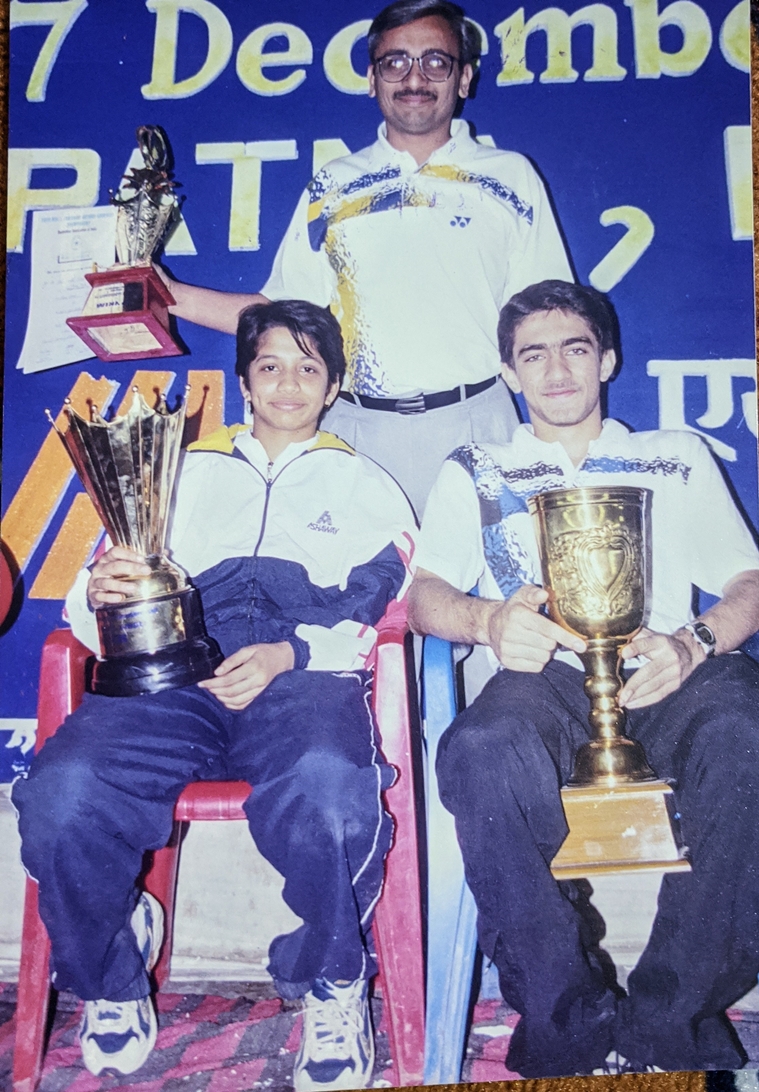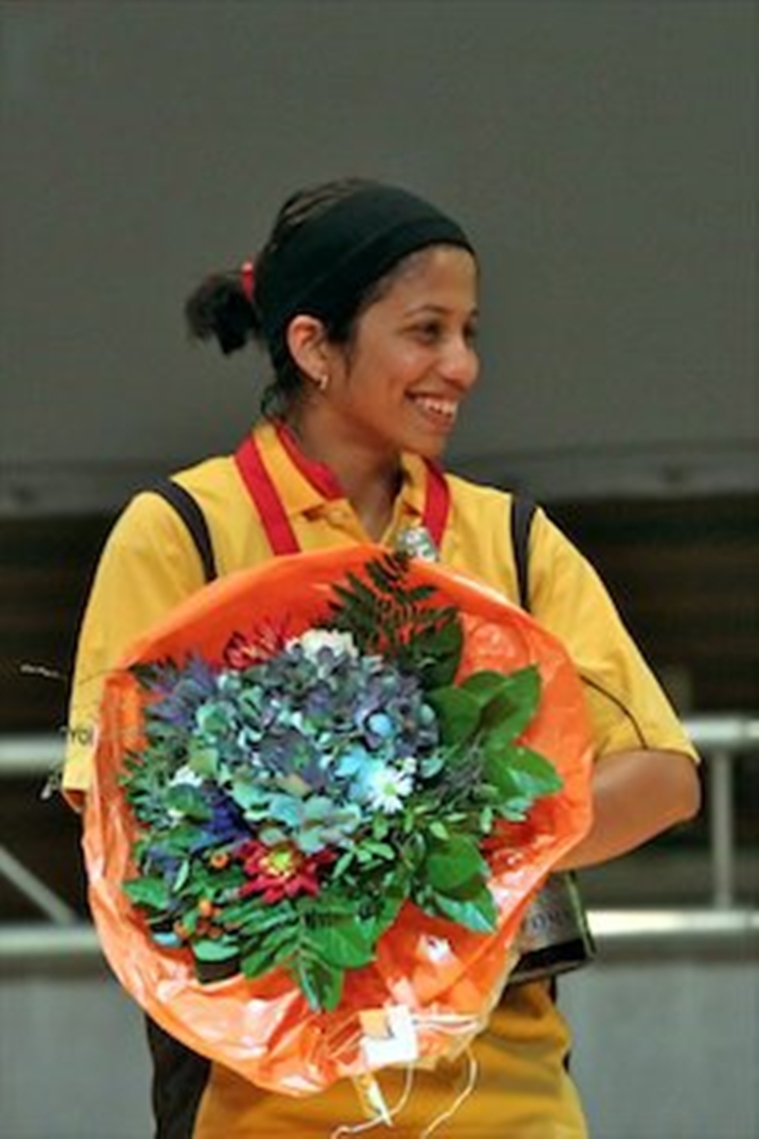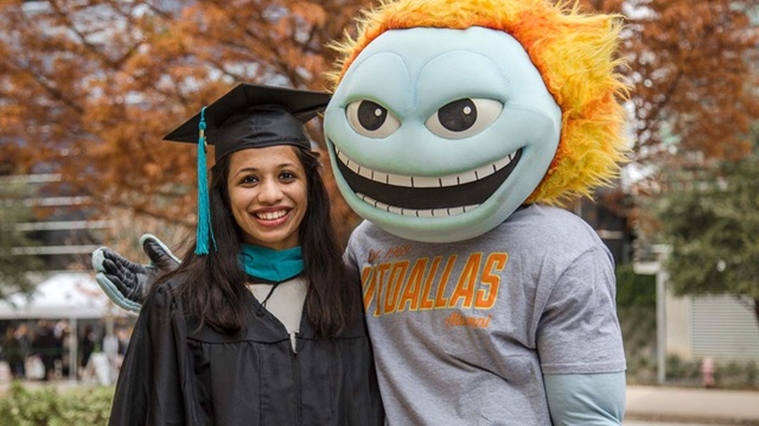Her sub-junior nationals win over Nehwal was a bit part in the film 'Saina'. But the scene sent Aditi Mutatkar reeling down a flashback to when Saina's shadow over her career never quite left her.
When a friend who Aditi Mutatkar had not spoken to for years called her last month and guffawed “Teri wajah se Saina ko chaataa padaa”, the 33-year-old was intrigued. The movie ‘Saina’ had had its theatrical release and a shadow had propped up from Aditi’s distant past. What’s more, there had been a dramatic slap on the big screen – when Saina’s angry mother raises her hand on her daughter, for losing to Aditi – and Aditi didn’t quite remember witnessing any of it.
It was only when she nervously watched the film on an OTT platform that Aditi would grapple with a memory that seemed seared in both the minds of the winner and the one who lost.
“Watching it was a trigger. Though I understand I was just used as a prop (in the plot) to show how she couldn’t take a loss against me and it proved to be a sort of a turning-point,” Aditi says.
While her name was used, she wasn’t contacted by the filmmakers. “There was no negative reference so that’s ok. But when I saw it, I felt I want to tell my story as well, so I got down to penning my thoughts.”
Saina had risen to stratospheric heights and earned herself a biopic. Aditi was content to tease out a thread of that walk-in part, and flesh it out in a blog-post.
“It triggered a string of emotions in me and took me back to a period — the last time I was India’s No. 1 without doubt. Everything shifted after that match. I had my knee injuries and Saina just shot up to another level winning the World Juniors by 2008,” she says.
The comparison would wreck her mind. “Look, me and Saina will always be a painful memory for me. She was extra-ordinary. I wasn’t extra-ordinary. It is not easy to accept that someone is so good that you don’t have a chance at all. I could never break through that aura of Saina,” Aditi says, in what is a mix of staggering awe and cutting sorrow.
What happened that day
“What they showed was that the two shake hands, Saina’s pretty happy but her mother is angry. I’m on the podium and then comes the slap. But frankly it wasn’t in public. I never saw the slap. What I remember is I had proven a point to myself and my coaches that I had not given up. I was back,” Aditi recalls.
At the 2002 junior nationals in Guntur, weeks before the sub-juniors at Patna, Aditi had received a hammering from Saina. “I’d never lost to her before that, but she ran past me in that match,” Aditi concedes, of a time when she was India’s top junior and Assam’s southpaw Krishna Dekaraja was No.2. Those were the beginnings of Saina’s giant-kills.
The Punekar would head back to her base, while coaches Prakash Padukone and Hemant Hardikar would voice their disappointment over a call and say the sorry scoreline was just not done. “I was under a lot of pressure and in a different ruthless mindset because I was irritated and focussed on proving a point that coaches couldn’t write me off,” she remembers.
Aditi remembers a crackling electric tinge to the rivalry in that final. “There was pressure on both sides. Khunnas! I was in good shape and roaring and fighting and got a comfortable lead. By the second game, her confidence had dropped and body language was down.”
While the loss would be the last time Aditi bested Saina, their careers would head south and north.
An aggravated knee would stalk Aditi’s progress – every good win followed by a longer break nursing truant tissues. She’d concede midway at a nationals playing Saina and then rupture the knee badly in training.
“When she was chasing me in rankings, there was mutual respect. Her mother would tell her ‘uske jaise khelo, spirit rakho’ and put me on a pedestal. Off the court I was known for my work ethic, so in our conversations her mother would urge her to follow that. Once she got a hang of it, the distance became too much,” she recalls. Saina was World No. 15 and Aditi, 28.
Saina would win the Philippines Open in 2006, and move into another orbit as a junior World Champion. Aditi would string a month of good results over the European swing including a fighting final at Bitburger Open Grand Prix, but the gap had begun to widen vastly.
“Post Bitburger, I could never match her in pace and technique,” she recalls of funding herself in Europe, arranging her budget hotel bookings, carrying a rice cooker, MTR packets and 5 litre Bisleri cans everywhere to refill at stadiums so she wouldn’t need to spend on water.
Indian badminton by now was besotted with the Haryanvi teenager shaking up the global order.
“Making the Bitburger final and beating some good names was a big deal in 2008. But I remember when I came back to Pune, the World Juniors were on. An umpire I’ve known for years walked upto me and asked, ‘Haven’t seen you around. Have you stopped playing badminton?’ I’d come back with a lot of confidence. But people in my hometown either didn’t know or didn’t care,” she says, more amused now, than bitter.
“Saina had taken the cake though. I knew I’d done something big, and I was playing decent badminton internationally. But given my limitations, Saina had become so big in comparison that whatever I did couldn’t capture anyone’s imagination,” she says, objectively dissecting a situation as if it was someone else being shaded a dozen years ago.
Aditi would beat the domineering Julianne Schenk, a frightful German in quarters, but falter to Indonesian Maria Febe Kusumastuti in finals, despite a bunch of match-points. “I had my teammates saying ‘If Saina was playing, she would’ve easily won that match.”
The shadow had well and truly glued itself to her by now. “I lived with that line for a long, long time. I should’ve enjoyed the journey and whatever I was achieving. It wasn’t bad. But whatever you did wasn’t good enough. I never could step out of the Saina shadow.”
Coaches Padukone and Vimal Kumar would celebrate her European progress in their under-stated way, but Aditi couldn’t match Saina’s astounding consistency of the earlier years, which set the future World No.1 apart at the topmost level. “She never dropped the ball.”
Treating her like God
On her return from Europe, a writer from Bangalore would urge Aditi to scribble about her fruitful European sojourn. “I actually wrote a nice piece titled ‘Thank you, Saina!’ It was written in the spirit of ‘You raised the bar, so we could follow.’ Day after, Tom sir (coach Tom John) was looking at me funny and asked me in his typical way: “Are you an idiot? What have you written? Don’t treat her like a god.’”
Aditi remembers settling into the distant No.2 spot without giving it much thought. “It was difficult to push her down from godly level. Because in my head she’d become a big deal. She’d raised the bar for every girl in every sport winning titles and beating the best. I couldn’t get that aura out of the way,” she says.
This was a death-knell for her competitive bite, that every challenger needs. Though she could get stuck into Saina using long rallies back then, that only prolonged the inevitable.
Aditi jokes she can serve as a giant WARNING sign to the next generation, now chasing PV Sindhu, an even bigger figure. “Never put them on a pedestal if you have to play them! Have respect for them, but don’t be satisfied with just nicking a few points off them. On the court, you have to start as equal. They shouldn’t be beating you in the head even before the game has begun.”
Badminton’s famous clash of cultures between Bangalore and Hyderabad, didn’t help matters. “Prakash sir and Vimal sir had a very democratic setup. Noone received special attention, and it was like sabko saath leke chalo. (Take everyone along). I had my Pune middle class attitude which could only take me to a certain level. At the top level, you need to be extremely selfish, doesn’t matter who falls by the wayside,” she explains.
Aside of the fact that her body was giving up on her game, Aditi confesses she didn’t have the drive in her. “If I wanted it as bad, I should’ve gone and snatched it,” she says, comparing it to the ruthless setting in Hyderabad.
“Gopi changed that way of thinking. He professionalised training. For him, it was like Saina is my next project and I’m taking her to the next level. He’ll take ownership of his players’ careers and then ensure they reach that level. Practice at 4 am to 5 am. Bas,” Aditi says in a mock military general tone.
Would she have done anything different?
“I was in Hyderabad for camps a lot and because Saina was around it was difficult to get unbiased attention. I never felt at priority there. In Bangalore or in Pune there was a sense of independence where I may not have had an individual team for myself I achieved everything on my own terms the best way I knew at that time.”
Beyond the court
As a 15-year-old, the match recreated in the movie, remained an inflection point for Aditi. “We were all in uncharted territory in dealing with me being stuck at No 2. India hadn’t seen anything like Saina before, and only I understood what I was going through as a No. 2 and I couldn’t articulate it,” she says. Her parents and coaches couldn’t know the tumult she was going through.
“I was competitive. But how do I accept that she’s 10 times better than me. Not knowing how to deal with it even when I played against her, ate me up,” she recalls of a torrid time.
By the time Saina medalled at the Olympics, Aditi had faded out in the wings. “I wanted to move on.” She would apply for Masters in Public Affairs at University of Texas in Dallas, studying government and non-profit management.
“It’s only when I started talking to professors and people outside the sport that I realised I’d actually achieved a lot in my career and the magnitude of being an international athlete, even if I wasn’t Saina Nehwal. Amongst my classmates, I always brought a fresh perspective to the table. It was as if my life as an athlete was mere preparation for this career,” Aditi says, having recalibrated how she saw her achievements.
At 15, Aditi had looked at her achievements the way other people saw them: casually tossing them aside compared to Saina’s. “I saw myself the way Saina saw me. But I should’ve enjoyed the journey more, rather than being caught up in this,” she says.
She was determined to not marry an athlete “of any kind”, and in Chinmay’s family found an environment far removed from the constant comparison.
His IT background and their stay in the US helped, as did the arrival of her child, Agastya. “Badminton was never a topic of conversation at home. I married a middle class IT guy and that aura of athlete subsided. My in-laws still don’t know what that space of sport is.”
It helped her bring contented closure to her career.
“I learnt that we should enjoy what we’re doing and not let another athlete bog you down. Sport is cruel, there’s no place to hide. But you can’t say, what’s the big deal in No. 2. Atleast you are No 2! When I won titles it was always back of my mind that she’s not there. But there were other challengers. And I beat them all. It really wasn’t as bad as I thought.”
Aditi frets over headlines that declare an athlete losing in the final as some sort of a failure, while their journeys to the final are ignored. “It’s either ‘jam nai rahaa hai usko jeetna’ or it’s the media teaching them how they need to win. I mean Sindhu knew what she needed to do to win, better than any of us! But everyone had to tell her ‘this is how you should play.’ We lionise winners, but there’s no space for ordinary champions or runners-up. In my life, every opponent gave me something to learn from, and were important in my journey,” she rues.
Like her, they had untold stories too, beyond a flimsy scoresheet.
Having started a bit of coaching few months back, she is at her wit’s end dealing with parents. “Now it’s everyone working in silos. Parents talk straight away about making kids world champion, there’s no reality check. It’s a big reason why there’s no bench strength in badminton after Saina and Sindhu.”
The gap between ambition and ability, is gobsmacking for her.
And she’s lived the gap.
Having tried all her life to shrug off the shadow, Aditi is now firmly in Saina’s corner wishing her the last gust of power to see out this illustrious career.
“The kind of person she is, she’ll come back. She’ll leave Gopi, she’ll leave Vimal, she’ll do whatever it takes if she decides she wants something. Her team will work around her injuries and maybe get her to play a less explosive game. As a fellow Indian, I want to see Saina as I know her. And Saina’s game is in her head. I won’t be surprised if we see a last push.”
Not many can argue with Aditi Mutatkar on her assessment of Saina: their rivalry being nothing short of a movie script in her own head.
She’s tried blinking that bit-scene away all her life. But Saina is hard to miss that way.
Source: Read Full Article
